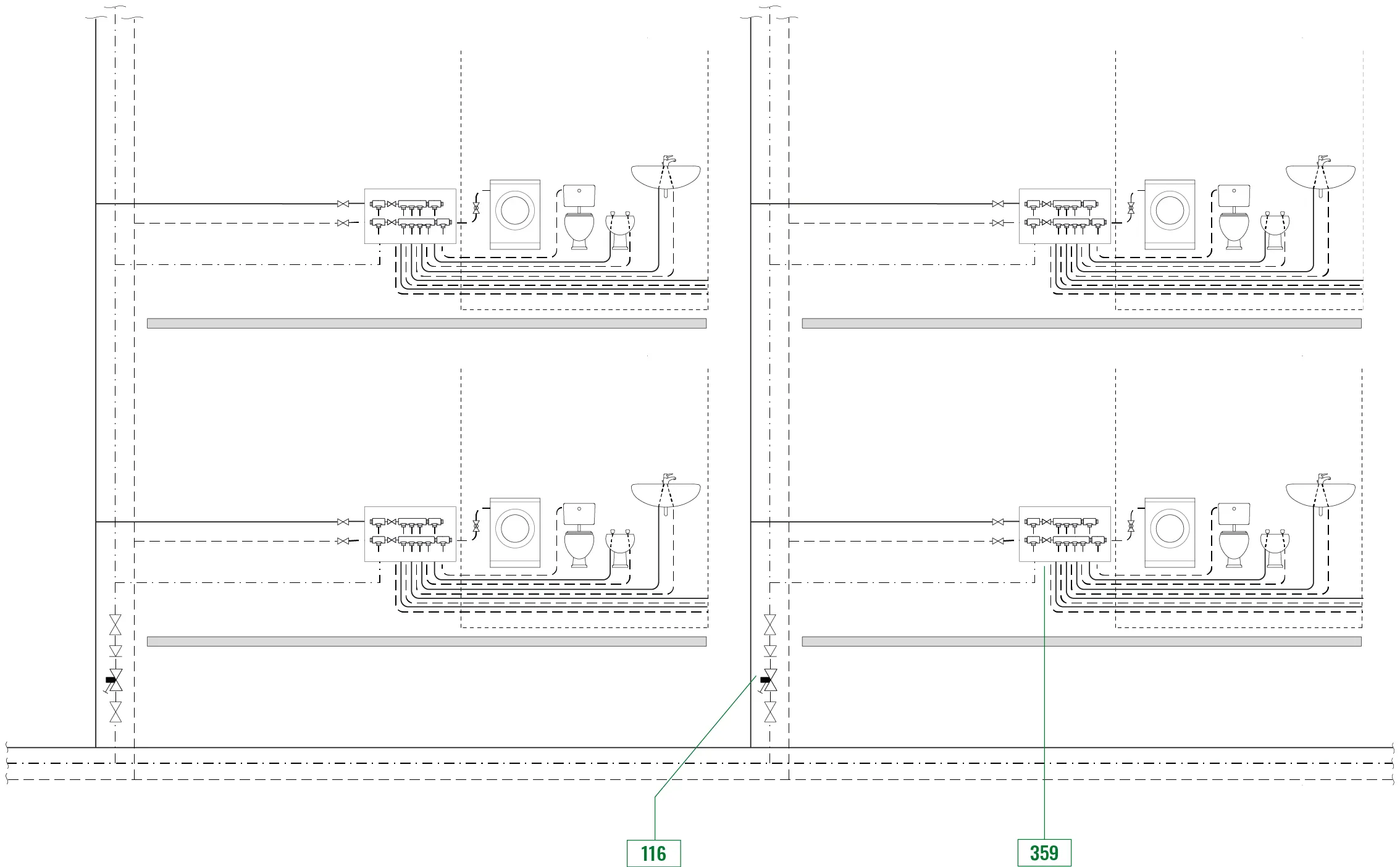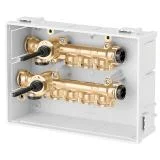

This diagram represents a centralized system for residential buildings with multiple housing units, where the distance between the distribution manifolds requires a configuration with secondary recirculation dedicated to each manifold.
Domestic hot water (DHW) is produced in a central technical room, by means of a storage sanitary kettle connected to an external generator and an electronic mixer for precise regulation of the delivery temperature.
The distribution of ACS and domestic cold water (AFS) is organized on upright columns for vertical ascent and distribution manifolds on each floor, with direct branches to the terminals (bathroom, kitchen, laundry room).
In cases where the distance between the manifolds exceeds 3 litres of hydraulic content, the scheme provides for a dedicated recirculation for each manifold, to ensure compliance with the waiting times provided for the DHW.
The recirculation is structured with:
● Secondary tubes that fall directly into the manifold (designed for this function)
● Hydraulic balancing by means of thermostatic regulators, which can be installed on each upright or even in floor pitches, in particular for tall buildings.
These regulators maintain the constant flow rate and the correct temperature, limiting stagnation or imbalance phenomena.
The presence of the electronic mixer allows the setting of automatic thermal disinfection cycles.
During these cycles, thermostatic regulators equipped with an automatic disinfection cartridge:
● Recognize the sanitization phase
● They allow the passage of the flow at high temperature
● They maintain the correct balance even in extraordinary conditions
This system ensures the hygienic-sanitary compliance of the entire system, even in the presence of branched and complex networks.

